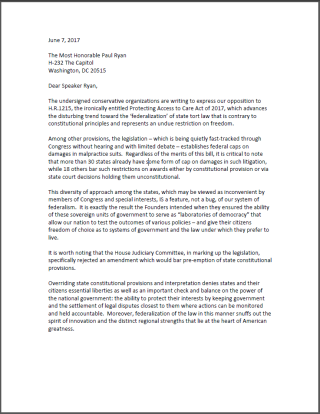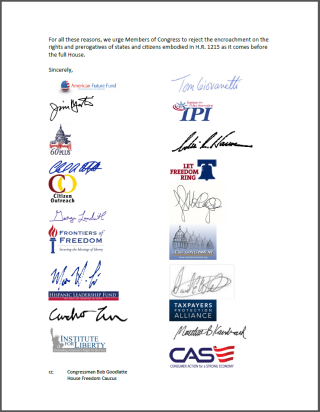Let’s start with the presumption that someone was wronged, they rightfully want to exercise their legal rights, and you have been retained to protect their rights. Let’s even presume, as hard as it might be, that your client’s goals are reasonable and realistic.
An attorney’s goal should be to achieve the best result under the circumstances. Clearly the client’s interests are priority number one; however, you should also be mindful of your ethical obligations (and maybe even moral responsibilities). For example, pushing a case through extensive discovery and trial purely because the client wants the opposing party to spend lots of money – as either leverage for settlement or commercial advantage – should not be tolerated by the profession. The American Board of Trial Advocates published a white paper that identified the goals and objectives of the civil justice system to include “fairness, confidence of the citizenry and litigants in the outcomes, impartial judges and juries, deterrence of wrongdoing and compensation for injury caused by wrongful conduct.” To further these competing goals, cases should move through the system expeditiously and efficiently. Lining the firm’s coffers or running someone out of business is not part of the formula.
Tomes have been written discussing the civility, lawyer conduct, and miscreants. I would like to impart the big picture upon my readers. How do you maximize the results for both you and your client while furthering the goals of the civil justice system?
First, know your enemy – this includes the party and potentially the insurer. Are they the kind of litigants that cave in to pressure or respond more to persuasive arguments? Are they turned off by pestering or do they require persistent reminders? If you are unsure, strike a balance. You should also know your legal counterpart – what are their habits and how to persuade them. Some attorneys in my town are notorious for avoiding trial and settling lawsuits at the last minute. If you are up against them, you know what to expect and are already ahead in the game.
Second, do your homework early. If you are prosecuting the case, you want to be trial ready before you ever put the opposing party on notice about the potential lawsuit. This is not always possible; but the key is that you have turned over every stone before making a demand. Why? Because you want to be several steps ahead of your opponent. After you make your demand, if the other party is receptive to pre-litigation mediation, you want to be able to counter their factual and legal arguments before they ever make them. If you are on the defense, you want nothing but asses and elbows once you get wind of the potential claim. You have to anticipate that the other side is almost finished with the race when you start, so you have little time to catch up.
Third, be reasonable. This ties in with the next item – integrity. Demanding a $1 million in a medical malpractice claim based on your client requiring a second surgery to correct something that went wrong the first time, leaving no permanent injury, is patently unreasonable. Yes, there are some jurisdictions where juries will tolerate such deviance, but the juries here will punish you. Your demands need to be reasonable. Your counters should be reasonable. Your legal and factual arguments should be reasonable. Once you step off the curb of reasonableness, you enter the highway of fraud.
Nothing is more valuable than your integrity. I recently read a blog post that suggested filing more motions in litigation will make settlement more likely. Granted, demonstrating to your counterparts that you are not afraid of the trenches shows you have resilience and passion, but it also suggests you will throw pasta at the wall to see what sticks; in other words, you will file motions regardless of the likelihood of success. For what purpose? In my eyes, you lost your integrity. Edward R. Murrow wrote, “To be persuasive we must be believable; to be believable we must be credible; credible we must be truthful.”
Let’s start with the presumption that someone was wronged, they rightfully want to exercise their legal rights, and you have been retained to protect their rights. Let’s even presume, as hard as it might be, that your client’s goals are reasonable and realistic.
An attorney’s goal should be to achieve the best result under the circumstances. Clearly the client’s interests are priority number one; however, you should also be mindful of your ethical obligations (and maybe even moral responsibilities). For example, pushing a case through extensive discovery and trial purely because the client wants the opposing party to spend lots of money – as either leverage for settlement or commercial advantage – should not be tolerated by the profession. The American Board of Trial Advocates published a white paper that identified the goals and objectives of the civil justice system to include “fairness, confidence of the citizenry and litigants in the outcomes, impartial judges and juries, deterrence of wrongdoing and compensation for injury caused by wrongful conduct.” To further these competing goals, cases should move through the system expeditiously and efficiently. Lining the firm’s coffers or running someone out of business is not part of the formula.
Tomes have been written discussing the civility, lawyer conduct, and miscreants. I would like to impart the big picture upon my readers. How do you maximize the results for both you and your client while furthering the goals of the civil justice system?
First, know your enemy – this includes the party and potentially the insurer. Are they the kind of litigants that cave in to pressure or respond more to persuasive arguments? Are they turned off by pestering or do they require persistent reminders? If you are unsure, strike a balance. You should also know your legal counterpart – what are their habits and how to persuade them. Some attorneys in my town are notorious for avoiding trial and settling lawsuits at the last minute. If you are up against them, you know what to expect and are already ahead in the game.
Second, do your homework early. If you are prosecuting the case, you want to be trial ready before you ever put the opposing party on notice about the potential lawsuit. This is not always possible; but the key is that you have turned over every stone before making a demand. Why? Because you want to be several steps ahead of your opponent. After you make your demand, if the other party is receptive to pre-litigation mediation, you want to be able to counter their factual and legal arguments before they ever make them. If you are on the defense, you want nothing but asses and elbows once you get wind of the potential claim. You have to anticipate that the other side is almost finished with the race when you start, so you have little time to catch up.
Third, be reasonable. This ties in with the next item – integrity. Demanding a $1 million in a medical malpractice claim based on your client requiring a second surgery to correct something that went wrong the first time, leaving no permanent injury, is patently unreasonable. Yes, there are some jurisdictions where juries will tolerate such deviance, but the juries here will punish you. Your demands need to be reasonable. Your counters should be reasonable. Your legal and factual arguments should be reasonable. Once you step off the curb of reasonableness, you enter the highway of fraud.
Nothing is more valuable than your integrity. I recently read a blog post that suggested filing more motions in litigation will make settlement more likely. Granted, demonstrating to your counterparts that you are not afraid of the trenches shows you have resilience and passion, but it also suggests you will throw pasta at the wall to see what sticks; in other words, you will file motions regardless of the likelihood of success. For what purpose? In my eyes, you lost your integrity. Edward R. Murrow wrote, “To be persuasive we must be believable; to be believable we must be credible; credible we must be truthful.”
www.daguannolaw.com

